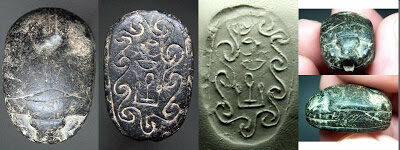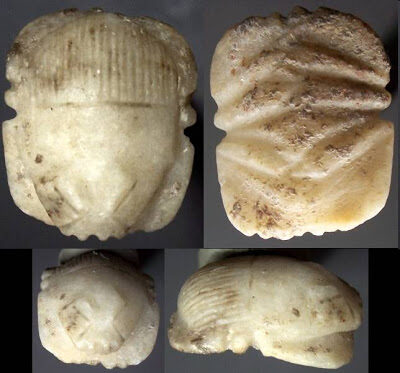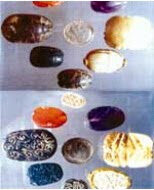According to The Middle East Media Research Institute (MEMRI, “Leading Egyptian Daily ‘Al-Ahram’ Reports: Coins from Era of Biblical Joseph Found in Egypt,” September 24, 2009, No. 2561):
_the Egyptian daily Al-Ahram [September 22, 2009], by Wajih Al-Saqqar, archeologists have discovered ancient Egyptian coins bearing the name and image of the Biblical Joseph_
Its importance lies in the fact that it provides decisive scientific evidence disproving the claim by some historians that the ancient Egyptians were unfamiliar with coins and conducted their trade through barter_
many charms from various eras before and after the period of Joseph, including one that bore his effigy as the minister of the treasury in the Egyptian pharaoh’s court_
On the other hand some references to coinage have been known such as:
_texts from the time of the Third Dynasty_states that the Egyptian coin of the time was called a deben_Other texts from the time of the Third Dynasty, the Sixth Dynasty and the Twelfth Dynasty mention a coin named shati or sat_
Research team head Dr. Sa’id Muhammad Thabet had been looking for “coins used as charms or ornaments” yet, “what most archeologists took for a kind of charm, and others took for an ornament or adornment, is actually a coin.” Moreover, “the coins come in different sizes and are made of different materials, including ivory, precious stones, copper, silver, gold, etc.” and some were “scarab-shaped.”
It is also reported that one coin:
had an inscription on it, and an image of a cow symbolizing Pharaoh’s dream about the seven fat cows and seven lean cows, and the seven green stalks of grain and seven dry stalks of grain_
Joseph’s name appears twice on this coin, written in hieroglyphs: once the original name, Joseph, and once his Egyptian name, Saba Sabani, which was given to him by Pharaoh when he became treasurer. There is also an image of Joseph, who was part of the Egyptian administration at the time.
Let us dive into to some of the concerns: as of yet it seems that the only report about these coins, particularly the one depicting Joseph, has come from one news source which published a photo of various carved scarabs.
Perhaps these are the “scarab-shaped” coins but none are shown to bear the image of Joseph-why not prominently picture this coin?
Some think that this is all a hoax and some that it is an attempt at an Islamic apologetic as along with reference to the coin of Joseph’s time in Egypt appeals are being made to verses from the Qur’an (Koran) which reference coin usage in Joseph’s day such as a reference to Joseph’s brothers selling him, “And they sold him for a low price, a number of silver coins (Surah 12:20).
Yet, note that since the Qur’an was not written until circa half a millennia after the time of Christ the Qur’an is alluding to the Bible which states, “sold him to the Ishmaelites for twenty shekels of silver” (Genesis 37:28).
The “twenty of silver” (the word “shekel” is not in the manuscripts) may be understood as the sliver having been in the form of coinage but could refer to the weight of the silver as “shekels” is a measure of weight which later came to be the name of coins.
Thus, it is advisable to wait and see what is to become of this-what corroboration, information and photos are to follow, if any.



